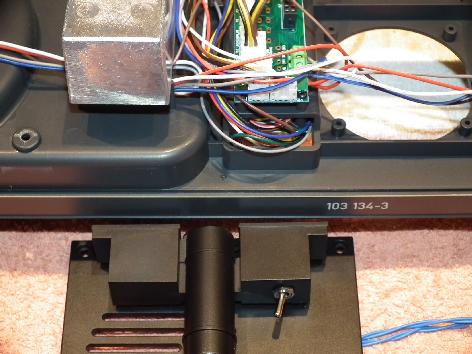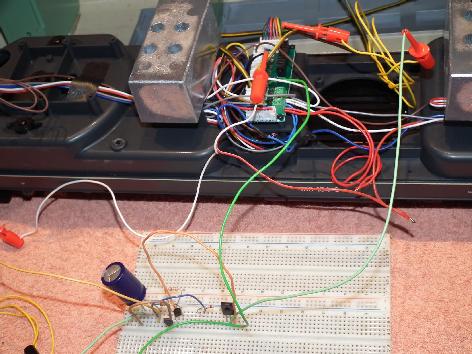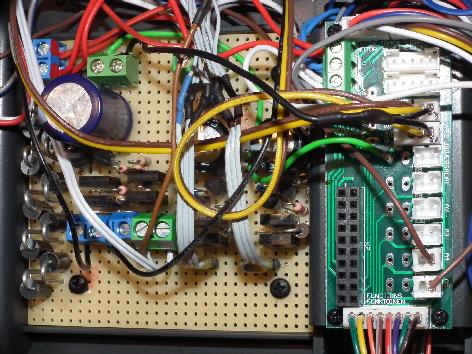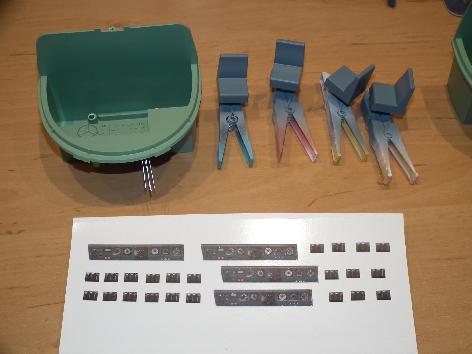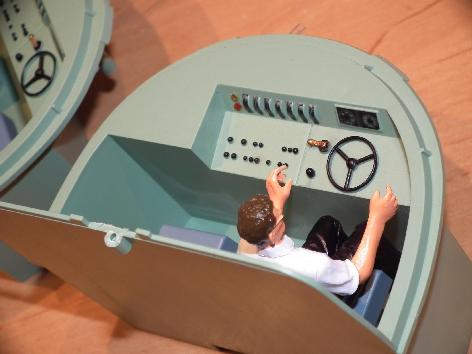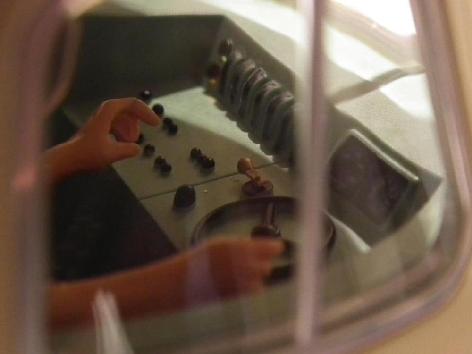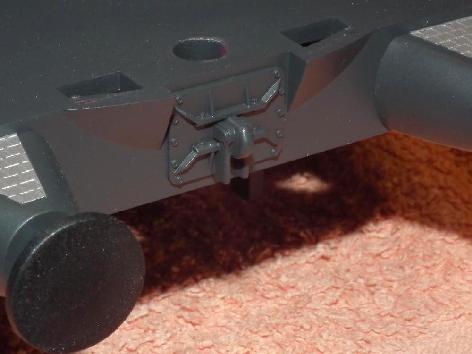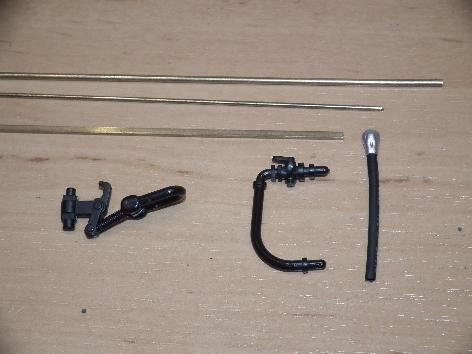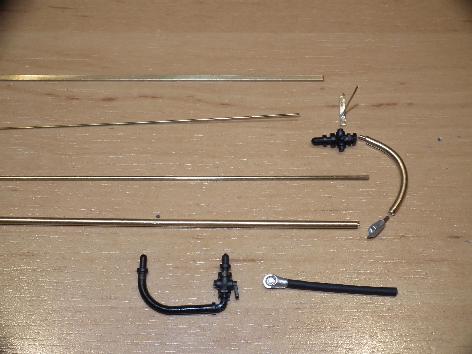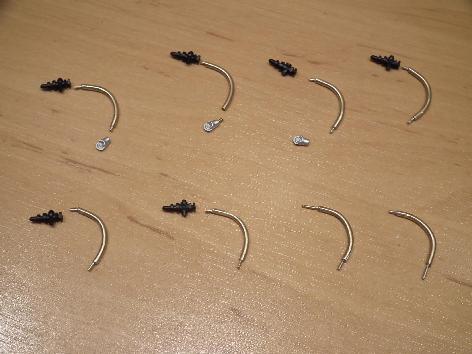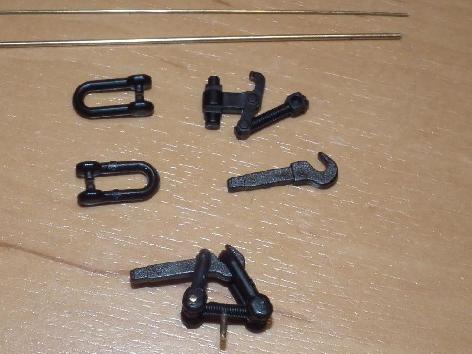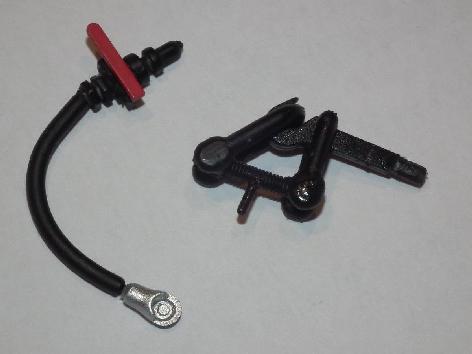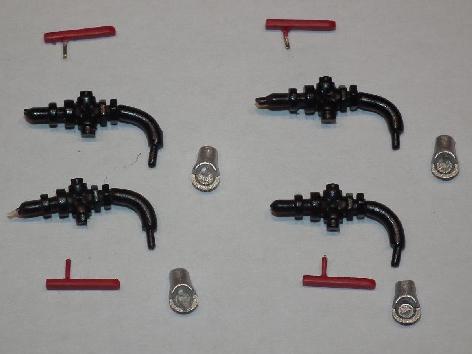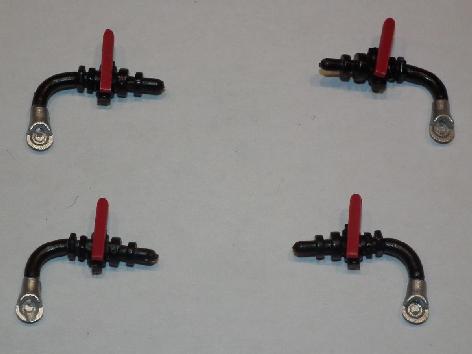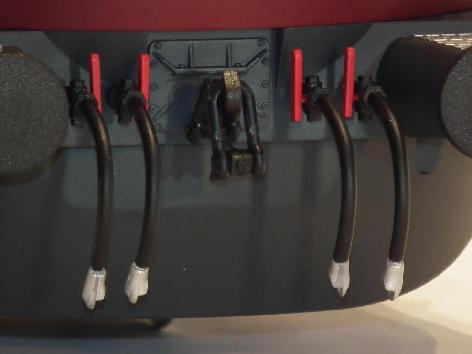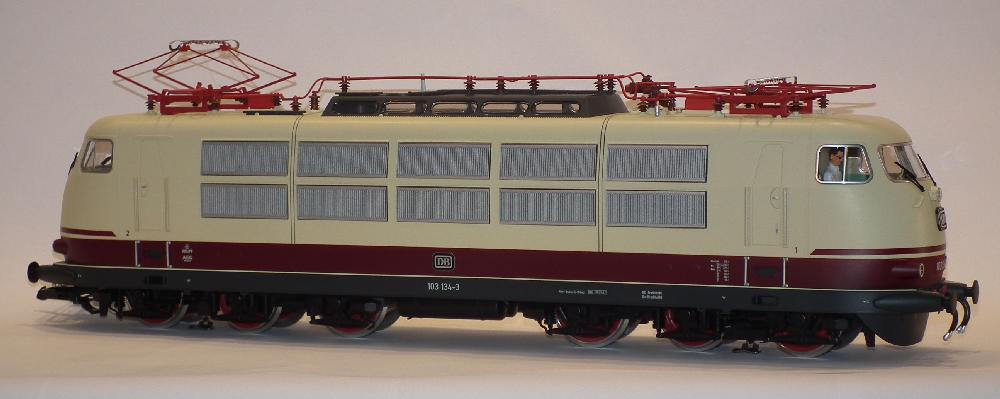Katzhagen - Archive - January 2019
The legendary class 103
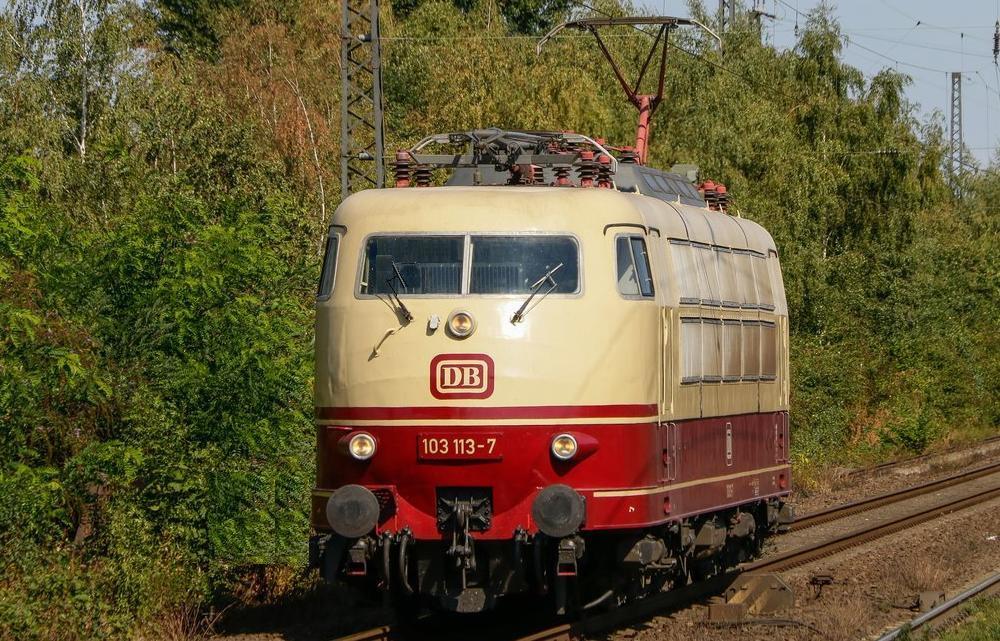
The six-axle engines of this class of German Federal Railways were developed for fast passenger trains and based upon their continous power of more than 10000 HP were regarded to be the enterprise's "flagship" for a long time. In fact, they were the most powerful one-piece locomotives worldwide when put into service. Furthermore, no more powerful tractive unit for regular service existed on German rails ever since.
The 103's history started in 1965 with four pilot series engines. 145 further productions units were put into operations starting in 1970. Decommissionings started in 1997. About 15 of these locos still exist in various museums.
The garden railway model
eventually hit my tracks, too - despite I had sworn to myself to never purchase a Piko tractive unit again because of previous negative experiences with these units' bad power pick-up. But thanks to Ian Flemming we all now know: "Never say never".
Since Piko has equipped the loco with ball-bearing stainless steel axles and a sufficient grade of detailing, there was none of the main reasons left to refuse an acquisition of this Piko engine. Nonetheless it lacks some essential details on the buffer beams and with its electrical internals. Fortunately, these shortcomings can be rectified without major ado.
Best prerequisites for related upgrades... starting with electrical matters:
First a switch for interrupting the motors' power supply was installed in an invisible spot on the loco's bottom side so that it f.i. can be put onto a track on the shelf with its illumintion switched on.
After having had identified the current consumption of the ex-factory head and tail LEDs, these LEDs got a constant current based power supply which provides for a continous luminosity starting at 5V. A simple starting delay was implemented too so that the loco sets off at a track voltage of 7V. Furthermore, a power supply was added for the cabs' and the engine compartment's illumination.
The engine comes with quite unembellished cabs which look more like belonging to the class 151 - if there weren't the roundly shaped fronts. The existing details were emphasized with a bit of colour and some decals and Doc Wilfer had to look for a new job. The Prehm loco driver had to angle his legs a bit for sitting down on the now blue-grey seat.
The more I think about it, the more I believe Doc Wilfer has fun in ignoring detailing buffer beams. Even hoses are not present and the hook at best is rudimentary. But there is remedy: Brass wrougth material as well as parts by LGB and Flueck.
Only the valve of the LGB part was used - a cutter helped to get rid of the unwanted details. Of Flueck's hoses only the couplings were used. Hoses were made from 1mm and 2mm brass rods and the handles were made from 2x1mm brass.
Hooks and couplings were made in very similar ways from brass wrought material, two LGB parts and on Flueck part. After having glued them together, they were primed, varnished and finally a semi-glossy coat was applied.
And the same once again - just with shorter hoses at the engine's tail where the bottle-opener needs to be able to move beneath the hoses.

